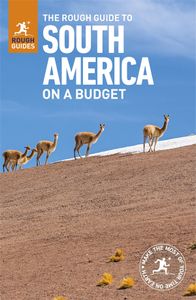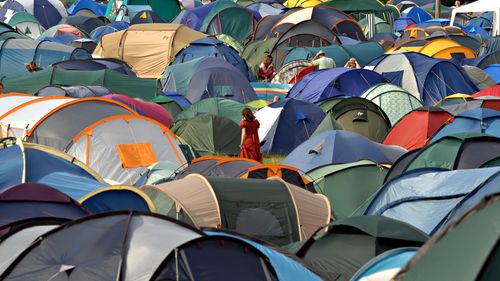Brief history
Arrowheads and rock art have proven human occupation around Arequipa for over ten thousand years. This began with early groups of hunter-gatherers arriving here on a seasonal basis for several millennia from 8000 BC to around 1000 BC when horticulture and ceramic technology began to appear in small settlements along streams and rivers. Initially influenced by the Paracas culture and later by the Tiahuanaco-Huari, two major local tribes emerged sharing the area: the Churajone living in the far northwest section of the Arequipa region, and the Chuquibamba who thrived higher up in the Andean plateaus above Arequipa until the arrival of the Incas.
The name Arequipa is derived from the Quechua phrase “ari quepay”, meaning “let’s stop here”, which, according to local legend, is exactly what the fourth Inca emperor, Mayta Capac, said to his generals on the way through the area following one of his conquest trips.
Colonial development
The Incas were not alone in finding Arequipa to their liking. When Pizarro officially “founded” the city in 1540, he was moved enough to call it Villa Hermosa, or Beautiful Town, and Don Quixote author Miguel de Cervantes extolled the city’s virtues, saying that it enjoyed an eternal springtime. The lovely white stone lent itself to extravagant buildings and attracted master architects to the city.
The wool trade
During the eighteenth and nineteenth centuries, this mountainous region became an important source of sheep and alpaca wool exports, largely to the UK. Connected to the rest of Peru only by mule track until 1870, Arequipa was slow to become the provincial capital it is today. Money made mainly from exports kept the economy growing enough to establish an electric urban tramway in 1913 and then a road up to Puno in 1928.
Political upheaval
Having acquired a reputation as the centre of right-wing political power, while populist movements have tended to emerge around Trujillo in the north, Arequipa has traditionally represented the solid interests of the oligarchy. Important politicos, like Francisco Javier de Luna Pizarro, who was president of Congress on many occasions in the nineteenth century, came from Arequipa. Sanchez Cerro and Odria both began their coups here, in 1930 and 1948 respectively, and Belaunde, one of the most important presidents in pre- and post-military coup years, sprang into politics from one of the wealthy Arequipa families. By 1972 the city’s population had reached 350,000. Twenty years later it passed half a million, with many people arriving from the Andean hinterland to escape the violence of Peru’s civil war.
The social extremes are quite clear today; despite the tastefully ostentatious architecture and generally well-heeled appearance of most townsfolk, there is much poverty in the region and there’s been a huge increase in the number of street beggars in Arequipa. Social polarization came to a head in 2002, when the city’s streets were ripped up in political protest against President Toledo’s plans to sell off the local electric utility.
Arequipeña delicacies
Arequipa’s restaurants are famous across Peru for a range of delicious dishes that make use of local food resources such as rocoto (an indigenous type of pepper), guinea pig, peanuts, maize, potatoes, chillis and river shrimps. The city is particularly well known for the following dishes:
- Adobo
Typically eaten for breakfast In Arequipa. This is a pork dish where the meat and bones are soaked and cooked in maize-beer sediment or vinegar, onions, garlic, boiled small rocotos and chillis.
- Cuy chactado
The name comes from the flat, round stone – or chaqueria – which is placed on top of a gutted and hung guinea pig to splay it out flat in a large frying pan, while cooking it in ample olive oil; it is usually served with toasted maize and a sauce made from chillis and the herb huacatay (black Andean mint)
- Ocopa
A cold appetizer that originated in this city but can be found on menus across Peru. iIt is made with potatoes, eggs, olives and a fairly spicy yellow chilli sauce, usually with ground peanuts added.
Monasterio de Santa Catalina
Two blocks north of the Plaza de Armas the vast walls of the Monasterio de Santa Catalina shelter a convent that housed almost two hundred secluded nuns and three hundred servants from the late sixteenth century until 1970, when it opened some of its outer doors to the public. The most important and prestigious religious building in Peru, its enormous complex of rooms, cloisters and tiny plazas takes an hour or two to explore. Some thirty nuns who still live here today, worship in the main chapel only outside of opening hours.
Originally the concept of Gaspar Baez in 1570, though only granted official licence five years later, the convent was funded by the Viceroy Toledo and the wealthy María de Guzmán, who later entered the convent with one of her sisters and donated all her riches to the community. The most striking feature is its predominantly Mudéjar style, adapted by the Spanish from the Moors, but which rarely found its way into their colonial buildings. The quality of the design is emphasized and harmonized by a superb interplay between the white stone and brilliant colours in the ceilings, the strong sunlight and deep-blue sky above the maze of narrow interior streets.
Los locutorios
Once you enter, you file left along the first corridor to a high vaulted room with a ceiling of opaque huamanga stone imported from the Ayacucho Valley. Beside here are los locutorios – little cells where on holy days the nuns could talk, unseen, to visitors.
The Novices Cloister and Orange Tree Cloister
The Novices Cloister, beyond the locutorios, is built in solid sillar-block columns, with antique wall paintings depicting the various qualities to which the devotees were expected to aspire and the Litanies of the Rosary. Off to the right, the Orange Tree Cloister (Claustro Naranjal), painted a beautiful blue with birds and flowers over the vaulted arches, is surrounded by a series of paintings showing the soul evolving from a state of sin to the achievement of God’s grace. In one of the side rooms, dead nuns were mourned, before being interred within the monastic confines.
La lavandería
Calle Cordoba runs from the Orange Tree Cloister past a new convent, where the nuns now live. The road continues as Calle Toledo, a long, very narrow street that’s the oldest part of the monastery and connects the main dwelling areas with la lavandería, or communal washing sector, is brought to life with permanently flowering geraniums. There are several rooms off here worth exploring, including small chapels, prayer rooms and a kitchen. The lavandería itself, perhaps more than any other area, offers a captivating insight into what life must have been like for the closeted nuns; open to the skies and city sounds yet bounded by high walls. Twenty halved earthenware jars stand alongside a water channel, and it also has a swimming pool with sunken steps and a papaya tree in the lovely garden.
Plaza Socodobe and Sor Ana’s rooms
Broad Calle Granada brings you from la lavandería to the Plaza Socodobe, a fountain courtyard to the side of which is la bañera, where the nuns used to bathe. Around the corner, down the next little street, are Sor Ana’s rooms. By the time of her death in 1686, 90-year-old Sor Ana was something of a phenomenon, leaving behind her a trail of prophecies and cures. Her own destiny in Santa Catalina, like that of many of her sisters, was to castigate herself in order to offer up her torments for the salvation of other souls – mostly wealthy Arequipan patrons who paid handsomely for the privilege. Sor Ana was beatified by Pope John Paul II in the 1990s.
The refectory and main chapel
The refectory, immediately before the main cloisters, is deceptively plain – its exceptional star-shaped stained-glass windows shedding dapples of sunlight through the empty space. Nearby, confessional windows look into the main chapel, but the best view of its majestic cupola is from the top of the staircase beside the cloisters. A small room underneath these stairs has an intricately painted wall niche with a Sacred Heart centrepiece. The ceiling is also curious, illustrated with three dice, a crown of thorns and some other, less recognizable items. Within the quite grand and lavishly decorated main chapel itself, but not part of the tour these days, are the lower choir room and the tomb of Sor Ana.
The main cloisters
The main cloisters themselves are covered with murals on an intense ochre base with cornices and other architectural elements in white stone; the murals follow the life of Jesus and the Virgin Mary. Although they were originally a communal dormitory, their superb acoustics now make them popular venues for classical concerts and weddings and the space can absorb up to 750 people standing or 350 seated around tables.
Religious art museum
Before exiting the monastery, there’s a rather dark religious art museum full of obscure seventeenth-, eighteenth- and nineteenth-century paintings. The best of these are in the final outer chamber, lined mainly with works from the Cusqueña school. One eye-catching canvas, the first on the left as you enter this room, is of Mary Magdalene. Painted by an anonymous nineteenth-century Arequipan, it’s remarkably modern in its treatment of Mary and the near-Cubist style of its rocky background.
Traditional folk music in Arequipa
Arequipa has a very strong tradition of folk singing and poetry, and folk musicians will wander from peña to peña. They often perform the region’s most authentic music, yaraví, which involves lamenting vocalists accompanied by a guitar. In recent years the youth of Arequipa have developed a preference for Latin- and Cuban-style ballads (troubador singing) accompanied by electric guitars, drums and sometimes keyboards, so the choice at weekends can be quite extensive.




















